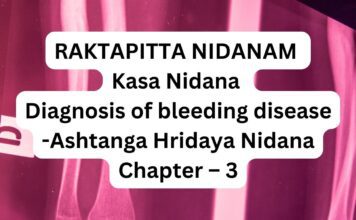ashtanga hridaya
Ashtanga Hridaya is a classical text of Ayurveda, the traditional Indian system of medicine. It was written by Vagbhata, an ancient Indian physician, and is considered to be one of the foundational texts of Ayurvedic medicine.
The Ashtanga Hridaya is written in Sanskrit and is divided into eight sections, or “ashtanga,” which cover various aspects of Ayurvedic medicine. These sections include:
1.Sutrasthana: This section covers general principles of medicine and the basic concepts of Ayurveda.
2.Nidanasthana: This section covers the diagnosis of diseases and their causes.
3.Vimanaasthana: This section covers the classification of diseases and their symptoms.
4.Sharirasthana: This section covers the anatomy and physiology of the human body.
5.Indriyasthana: This section covers the senses and their functions.
6.Chikitsasthana: This section covers the treatment of diseases and various therapies.
7.Kalpasthana: This section covers the preparation and use of Ayurvedic medicines.
8.Siddhisthana: This section covers various aspects of spiritual healing and the attainment of enlightenment.
The Ashtanga Hridaya is considered to be a comprehensive and authoritative text on Ayurveda, and is still used by practitioners of Ayurvedic medicine today.




















































